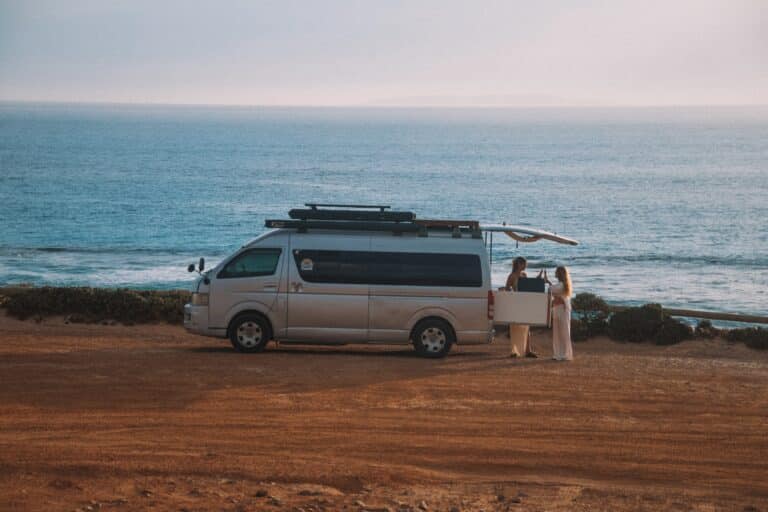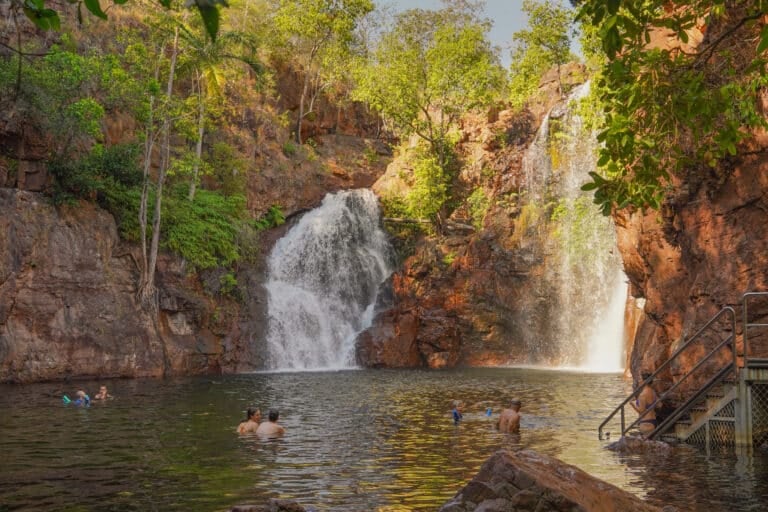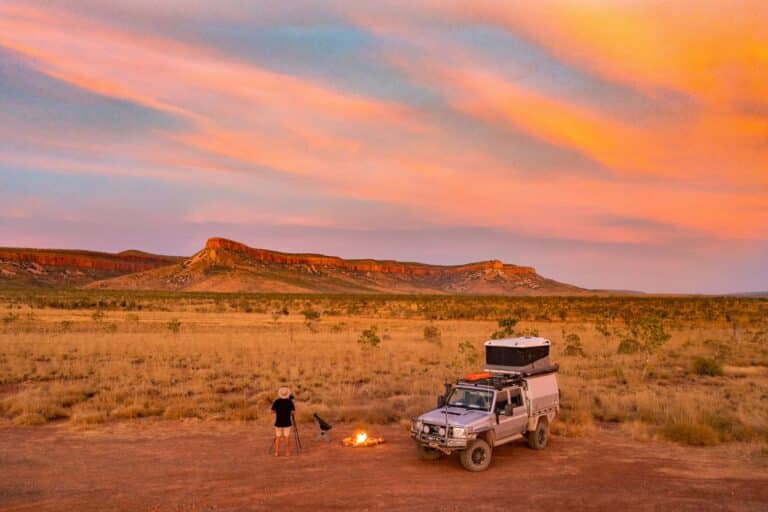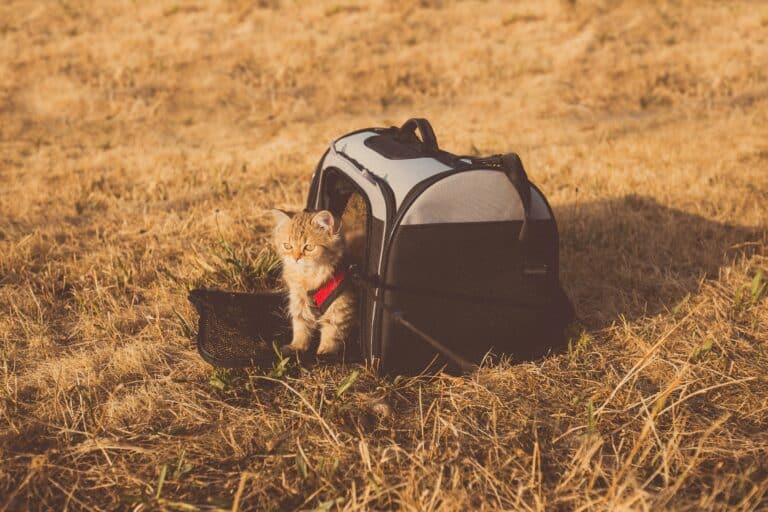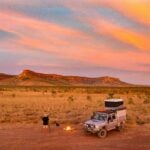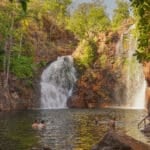THE BLOOM’N WEST
Western Australia’s wildflower season is world renowned but what many visitors don’t realise is that it actually runs for about five or six months of the year.
Words and Photos by Colin Kerr
ADDITIONAL INFORMATION
TOURS – Visitors to Perth have a wide range of self-drive or fully-escorted wildflower tour options available – contact the WA Visitors Centre for full details.
- The west’s unique flora has not always had instant appeal, particularly to early explorers who generally described the landscape as ‘barren and desolate’. Even Charles Darwin, who visited the coast near Albany in 1836, commented that he would ‘never wish to walk again in so uninviting a country’. That same country, seen through different eyes today, has become one of our greatest assets – a priceless gift for all to enjoy.
- Wildflower Holiday Guide booklets (and other wildflower information) are available from the WA Visitors Centre – cnr Forrest Place and Wellington Street, Perth – web: wavisitorcentre.com – phone 1300 361 351. Also call into local visitor centres in country areas to find the best wildflower displays in the local vicinity.
Please protect the Flora – to conserve the native flora and fauna for future generations, no domestic animals are permitted in national parks. The picking of wildflowers is prohibited by law throughout Western Australia.
- While there are around 8000 species of flowering plants in WA’s south-west alone – throughout the whole state up to 12,000 have been recorded and this tally is being constantly added to with new discoveries being regularly made by botanists and wildflower enthusiasts throughout the state.
- For further information – web: www.wildflowerswa.com
Mention wildflowers to anyone who knows anything about these little gems of nature, and they will be aware that each year Western Australia produces the best display in the country. In the state’s south west corner alone, more than 8000 species of flowering plants have been recorded.
Throughout this floral wonderland, different native plants can be found in flower throughout the year. In spring the countryside bursts into brilliant colour with carpets of daisies, kangaroo paw and leschenaultias, while heathlands glow with wattles, bottlebrushes, banksias, coppercups, verticordias, orchids and myriad others.
The spring spectacular in the west generally starts in the northern areas around Shark Bay, Carnarvon, Kalbarri and northern Wheatbelt districts in July and August. As the warmer spring weather heads south, so does the wildflower show. The Jurien Bay, Mt Lesueur and Badginarra regions on the coastal fringe are prolific where more than 800 species of wildflowers will be on show.
From there, down through the district known as the Wildflower Way including Mullewa, Morawa, Perenjori, Dalwallinu and Gin Gin to Perth is a very popular stretch. The inland areas around Mullewa, Yalgoo and Paynes Find are a particular favourite for those looking for wide expanses of colourful everlasting daisies – beautiful papery flowers in a variety of shades growing in their millions over fields and hillsides.
Throughout the Wildflower Way there is also a wide range of banksias, grevilleas, wattles, melaleucas, verticordias, smokebushes and hakeas all turning on a springtime show right through the district. The unique wreath flower is prevalent around Mullewa and Pindar, and throughout the area many tiny orchids, some only a few centimetres above the ground, come to life and can be spotted by those prepared to get out of their cars and look around.
The far south west of the state gets its turn next as the year rolls into September, October and even on to November. Here, among a huge variety of blooms, the state’s floral emblem, the kangaroo paw, and its closely related range of cats paws, are a real curiosity and always a favourite for those who find them in full bloom in their natural environment.
With shapes that virtually defy description and colours ranging through greens, black, orange, red, yellow and almost anything in between, they are a real oddity. In these springtime months, flowers throughout most of the state’s southwest corner, including the rugged Stirling Ranges, the southern Wheatbelt around Narrogin, the Fitzgerald River National Park, and east to Esperance, all begin to burst into life with colourful, and in some regions quite spectacular, arrays.
As always with Mother Nature, depending on the spread of winter rainfall, much of the rest of the state can also produce a proliferation of wildflowers to compete with their south west corner cousins.
Inland areas through the goldfields from Meekatharra to Kalgoorlie, the Pilbara, and even out into the Great Sandy Desert as well as the Gibson and Great Victoria Desert regions, with timely rain, produce a bonanza in desert and semi-desert wildflowers blooms which will start their showy displays in July and early August. Huge expanses of purple, pink and white mulla mullas will also be seen at these times throughout the area as well as solanums (bush tomatoes) and scattered carpets of Sturt Desert Peas. Flowering eucalypts, hakeas and grevilleas will also turn on a good show and even some rare and especially delicate plants which often lay dormant for several years during dry spells will burst into life.
The range of flowers to be found by wildflower enthusiasts each year seems almost endless. Many visitors come back to WA again and again, whilst the locals, in increasing numbers, are heading off in different directions for their wildflower discovery trips each spring. Many others who are able to take annual leave at that time of the year, or the growing clan of still active people opting for retirement travels, are discovering the west’s wildflower range both in spring and at other times of the year.
WA Wildflowers – another piece of Mother Nature’s Magic.
GET OUT AND WALK
Travelling in a vehicle at anywhere up to 100km/h just isn’t the way to get the best out of any wildflower venture. Some folk tell of their disappointment at not seeing many wildflowers, but when quizzed, you find that their trip was more of a speed rally than a wildflower adventure.
In some of the northern regions where masses of everlasting daisies cover the ground like a beautiful shimmering carpet, the broad general vista is often the best, but elsewhere you need to slow down and stop to properly see and appreciate the wonderful blooms that nature shows off each year. Take a look at photographs accompanying this article – none of these were taken from a moving vehicle.
Most visitors are literally amazed at what they find when they make this small effort.
WILDFLOWERS AROUND PERTH
Notable locations are John Forrest and Yanchep national parks which have a splendid reputation for a wide variety of wildflowers. Closer to the city centre, Wireless Hill is a great place to see large numbers of kangaroo paws and Kings Park, overlooking the city and only a few minutes’ walk from the city centre, is worth a visit just for the views alone. Within the park there are walk and drive trails leading past and through wonderful parklands and garden beds full of wildflowers as well as bushland sections where wildflowers grow naturally without any help from the park staff. The Kings Park Wildflower Festival, held throughout September each year, is a must for all wildflower enthusiasts.
STIRLING RANGE
On the slopes of the Stirling Range (330km south of Perth) there is known to be more than1500 different species of flowers and plants, at least 87 of which are endemic to the area. Stirling Range Drive, a trail leading through the centre of the park, is a splendid place to see a wide range of the flowers found in this beautiful mountain range. The range is also known for the wide variety of delicate orchids – some of which are located nowhere else in the world. In all there are some 82 plants here that are endemic to the Stirling Range.
FITZGERALD RIVER NATIONAL PARK
Situated on the south coast of WA, this is another splendid national park with mountainous regions as well as beautiful coastal scenery. The wildflower range is also extensive with more than 1800 species. This is a less developed park than the Stirling Range, but is a must for wildflower enthusiasts with a little time to explore and enjoy the surrounds. The Royal Hakea is one of the park’s best-known plants – found nowhere else in the world.





